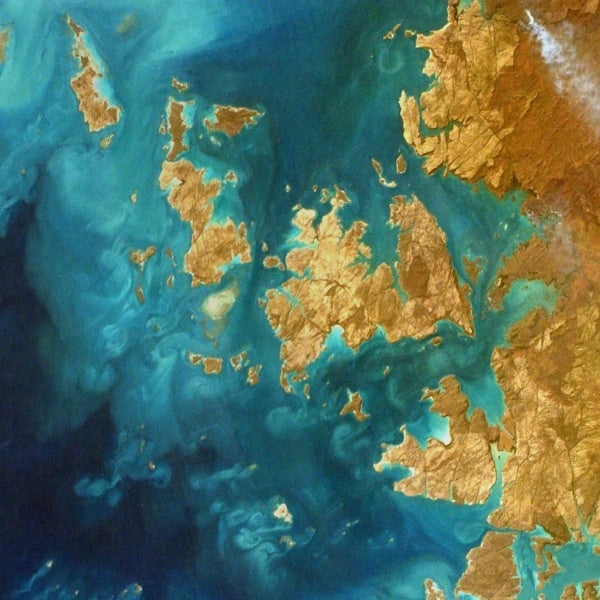The National Oceanic and Atmospheric Administration (NOAA) recently published its billion-dollar disasters report. It analyzes the weather and climate events impacting the U.S. during 2021 that caused at least US$1 billion of damages. NOAA reported that the total number of catastrophes in this category was 20, compared with an average of 12 each year between 2010–19.
In terms of the total cost of these 20 weather and climate catastrophes, NOAA set this at US$145 billion, very close to the US$148 billion average annual damages between 2017–21. And although there is no simple way to attribute the proportion of these U.S. damages in 2021 to preexisting climate change, a number of these events are highly likely to have a climate change signature.
Droughts and Extreme High Temperatures
Some of the strongest climate change influences concern droughts and extreme high temperatures. In 2021, drought extended across many western U.S. states, and a heatwave that peaked with a “heat-dome” in late June/early July produced the highest ever recorded temperatures in many cities in Oregon, and Washington, as well as in British Columbia.
For the first time, a lack of precipitation led to the shutdown of a hydropower plant in Lake Oroville, California. Economic losses from the 2021 western U.S. drought and heatwave are set at US$8.9 billion.
Wildfires are exacerbated by droughts, heatwaves, a lengthened dry season, and wetter winters creating more vegetative fuel, all of which are expected consequences of climate change. Western wildfires caused US$10.6 billion in damages throughout the year. The Dixie Fire in California, the second largest of recent decades, burned almost a million acres and consumed more than 1,000 structures.
The Caldor Fire threatened South Lake Tahoe communities in August, and there were major wildland fires in Washington, Oregon, Idaho, Montana, and Arizona. And as late as December 30, the Marshall Fire in Boulder, Colorado, was the worst known in the state and destroyed more than 1,000 buildings.
Tropical Cyclones
Another signature of climate change is expected to be more precipitation from tropical cyclones, principally because higher temperatures allow the atmosphere to hold more moisture. It has also been proposed, but not proven, that a trend toward slower forward speeds would mean rainfall is more concentrated, especially when a storm stalls at the coast – the “Hurricane Harvey effect.”
Hurricane Ida was the only intense (Category 3-5) U.S. landfalling Atlantic hurricane in an active 2021 season of 21 named storms. As the circulation passed over the warm waters and the deep thermocline of the Loop Gyre south of Louisiana, the hurricane intensified to Category 4 with a central pressure of 929 millibars and windspeeds of 150 miles per hour (241 kilometers per hour), equaling the strongest ever observed in any previous Louisiana landfall.
Ida was also slow to weaken after landfall, traveling over evaporating swamplands in Louisiana that had already received high levels of precipitation – an area termed the “brown ocean.” Ida sustained Category 3 and 4 winds for seven hours after landfall, bringing building damage deep inland.
Moving further inland, Hurricane Ida brought a moisture-laden tropical air mass that was rained out and then turned into flash floods over eastern Pennsylvania, New Jersey, and New York City. Intense rainfall continued through Connecticut and on to the Atlantic coast of Canada.
The total damage for this single hurricane was US$75 billion – more than half the U.S. national total – and insured losses from Ida were also the largest worldwide in 2021 at US$30–35 billion. In November 2021, the United States Geological Survey (USGS) estimated that 108 square miles of land along the southern Louisiana coast had disappeared following the storm, from wave erosion, subsidence, and sea level rise.
Other landfalling named tropical storms and tropical cyclones (Hurricane Elsa, Tropical Storm Fred, and Category 1 Hurricane Nicholas) each contributed more than US$1 billion in damages from rainfall-related flooding. Notable rainfall-related floods for 2021 included events in New Orleans in May and in California during late January, exacerbated by mudslides and debris flows triggered by the loss of vegetation following years of devastating fires.
Cold Air Outbreak
Even the Texas “big freeze” in 2021 may have a climate change signature. For four days, from February 14–17, temperatures plummeted in Texas as Arctic air from Canada was directed to the south. This caused the second-highest damages from a weather event in the year: US$24 billion, with an insured loss of around US$15 billion.
In 2018, climate scientists first identified that rapid Arctic warming had the potential to cause a weakened polar vortex. The frequency of weakened vortex states in mid- to late winter has increased since 1980, leading to outbursts of extremely cold polar air to midlatitudes. A September 2021 study in Science extended this connection to include the Arctic weather experienced in Texas in February 2021.
Worldwide Losses
Looking worldwide, according to Munich Re, total natural catastrophe insurance loss in 2021 was US$105 million, which is the fourth-highest total since 2000. Examining the percentage of insured losses compared to economic losses, total losses represent a 58 percent protection gap (57 percent in Munich Re figures) relative to an economic loss of US$250 billion.
This compares with a worldwide 57 percent protection gap in the year 2020 and 60 percent in the decade up to 2020. The protection gap is smaller for 2021 U.S. natural catastrophe losses at 41 percent. The two costliest insured losses worldwide in 2021 were the Texas freeze event and Hurricane Ida.
Another notable catastrophe likely to have been exacerbated by climate change was brought by the July 13-15, 2021, rainstorms across western Germany into Belgium, which deposited more than 7.8 inches (200 millimeters) of rainfall over one or two days. The total number of fatalities as a result of the floods reached more than 200. Total damages are estimated at US$40 billion with insurance paying out US$13 billion, representing the third highest catastrophe loss in the year.
Across a wide range of weather and climate catastrophes, the climate change signal is present to a greater or lesser extent. Some signals, such as heat and drought, are clearer and more understood, while others are starting to become more evident. Insurers need to understand that climate change has the potential to significantly exacerbate events and cause deviation from the historical record. As an industry, we all need to focus on how this is going to play out now and in the future.
Learn more about how RMS® is working to understand the ways climate change affects perils and regions around the globe – and how we’re providing solutions to help build a more resilient world.







